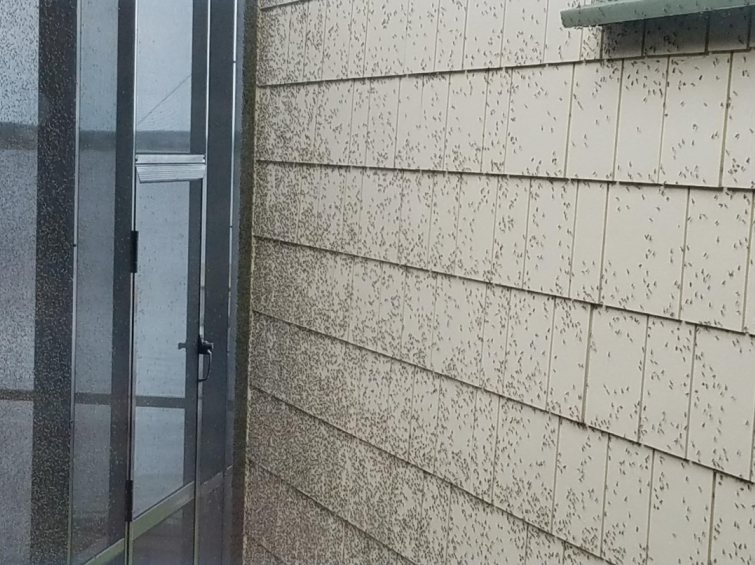August 1, 2018
Do You Have Aquatic Midges?
(aka blind mosquitoes)
Aquatic midges, or blind mosquitoes, don’t bite, suck blood, or carry diseases, but they can be a real problem for homeowners on the lake. They can be beneficial as a food source for fish, and lakes where the midge breeds are the best fishing lakes. However, the nuisance created by these little bugs far outweighs the benefit.
One of our JLIA members shared this photo:

The aquatic midge has four stages in their life cycle: egg, larvae, pupae and adult. The eggs are laid on the surface of the water in a gelatinous mass that can contain upward of 3,000 eggs that will hatch in 2-7 days. The larvae then feed on that gelatinous mass for about 2 days, they then burrow into the mud and feed off organic matter in the mud and water. After a period of 2-7 weeks, they transform into pupae and swim to the surface of the water. Within hours, the adult midge emerges- then look out!! The adult midges usually emerge in large numbers between April and November. During the day, they hang out in cool shady place and swarm at night to mate, preferring the lighted areas around homes (pools, porches, accent lighting). They do not feed, so they only live 3-5 days, then the life cycle begins again.
Midges eventually attract spiders, their natural predator. The accumulation of midges in the webs results in frequent washing of home exteriors. As these midges die and decay, they can produce an offensive smell similar to rotting fish.
Their occurrence and survival often indicates the type and amount of nutrients found in the water. Attempts at control involving insecticides or fogging units only address the adults (who have shown to develop a resistance to pesticides) and can even be counter-productive if it kills the natural predators. These attempts at control are only temporary as the next generation emerges rapidly. Midges breed in water that is excessively rich in nutrients, frequently caused by runoff from the land that contains organic materials, fertilizers (phosphates), among other materials. These nutrients stimulate the growth of aquatic plant life (such as algae), resulting in the depletion of oxygen. As nutrients increase, so does the population of midges.
Recommendation for lakefront residents:
- Reduce the use of unnecessary outdoor lighting, and indoor lighting that will attract midges to the
windows and building - Use a “light trap” in a corner of your yard to attract midges. Use of bug zappers is not recommended because they kill beneficial insects as well as the midges.
- Prevent nutrients from entering the lake by eliminating debris at the lakeshore (leaves, grass clippings, etc.)
- Prevent fertilizer (phosphate) from washing into the lake by maintaining barriers to prevent runoff
and by not fertilizing between the barrier and the lake. - Consider planting aquatic plants that improve the waterfront by removing excess nutrients that the larvae feed on. Though this is a slow process, it help to improve the overall lake health and wildlife habitat.
All of this information and more can be found on the following University of Florida site.

